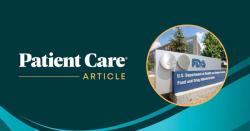© 2025 MJH Life Sciences™ , Patient Care Online – Primary Care News and Clinical Resources. All rights reserved.
Radioulnar Synostosis
During a routine preschool examination, it was noted that this 4-year-old boy, who weighed 30.8 kg (68 lb), did not seem to rotate his arms. The child's mother stated that she first noticed this 2 or 3 years earlier but thought it was related to her son's obesity. The youngster appears to function normally; he is able to write and play football and basketball. No other family members are known to be similarly affected.
During a routine preschool examination, it was noted that this 4-year-old boy, who weighed 30.8 kg (68 lb), did not seem to rotate his arms. The child's mother stated that she first noticed this 2 or 3 years earlier but thought it was related to her son's obesity. The youngster appears to function normally; he is able to write and play football and basketball. No other family members are known to be similarly affected.
Radiographic evaluation revealed radioulnar synostosis, an isolated congenital autosomal dominant condition characterized by the osseous union of the proximal ends of the radius and ulna. During embryonic development, the two bones fail to separate. The abnormality may affect one or both arms.
Careful physical examination in infancy will disclose the defect, but most commonly, the diagnosis is made during early childhood when loss of forearm rotation is recognized.
Surgical treatment is reserved for children whose ability to function is moderately to extremely impaired. Osteotomies of the radius and ulna may be performed to rotate the bones into a more functional hand position. Procedures to release the bony union or reconstruct the radial head are usually futile.
This boy adapted and functioned well, with no restrictions on physical activity. Reassurance was the only treatment required.
Related Content:



